High quality materials for a lasting, low-impact gift
All the elements that go into each memory book and why specifically I chose them.
written by fiona

published on August 1, 2024
Creating Fondfolios with durable, high-quality materials is a top priority for me, along with minimizing their impact on the planet. To achieve this, I use only sustainably sourced natural materials—no plastics—and strive to reuse or repurpose any waste or offcuts whenever possible.
Each memory book is crafted to stand the test of time, lasting for generations with proper care. However, if it ever ends up in a compost pile, my goal is for every part of it—including the packaging—to be fully biodegradable.
Now, let’s explore every element of a Fondfolio in detail, starting from the outside and working inward.
Packaging
- Each book comes packed in a cardboard box, sealed with gummed paper tape and decorated with paper labels. This means you can pop it directly into the paper recycling, without a second thought.
- There’s an outer wrapping of recycled unbleached tissue paper, sealed with a paper tape, which can be composted.
- Then we have the main wrap, a vintage scarf which I personally source from the cavernous scarf bin at my local thrift store. This can be reused to accessorize an outfit or to wrap a gift for someone else. I add a wooden tag (made from offcuts) to each wrap to explain this as well as show a sample of another wood colour. I add a handwritten tag to this wrap and will sign it from the giver.
- When someone opens the fabric wrap, the first thing they will see is a personalized paper postcard, which explains the gift, so you can just enjoy watching the significance sink in.
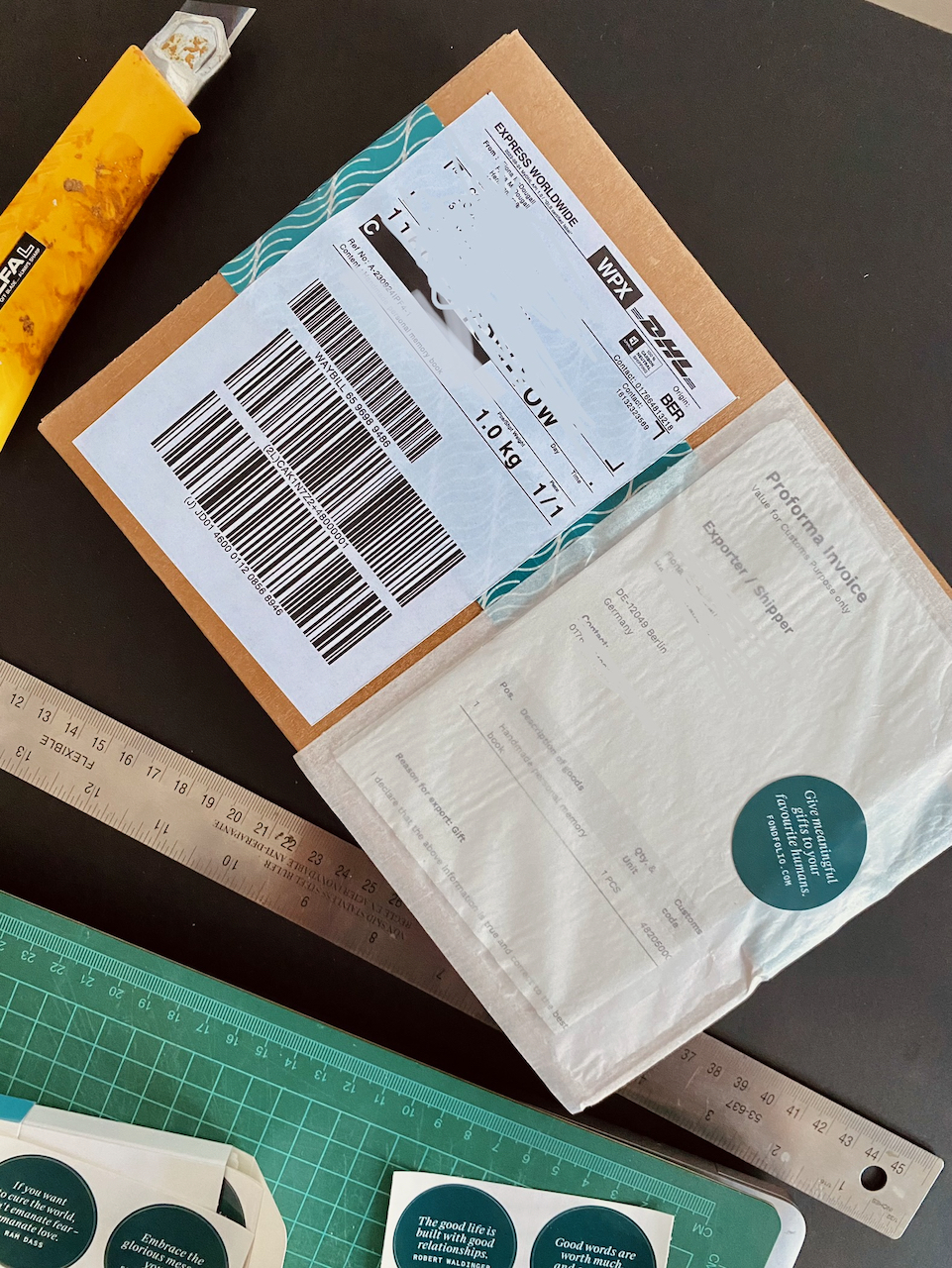
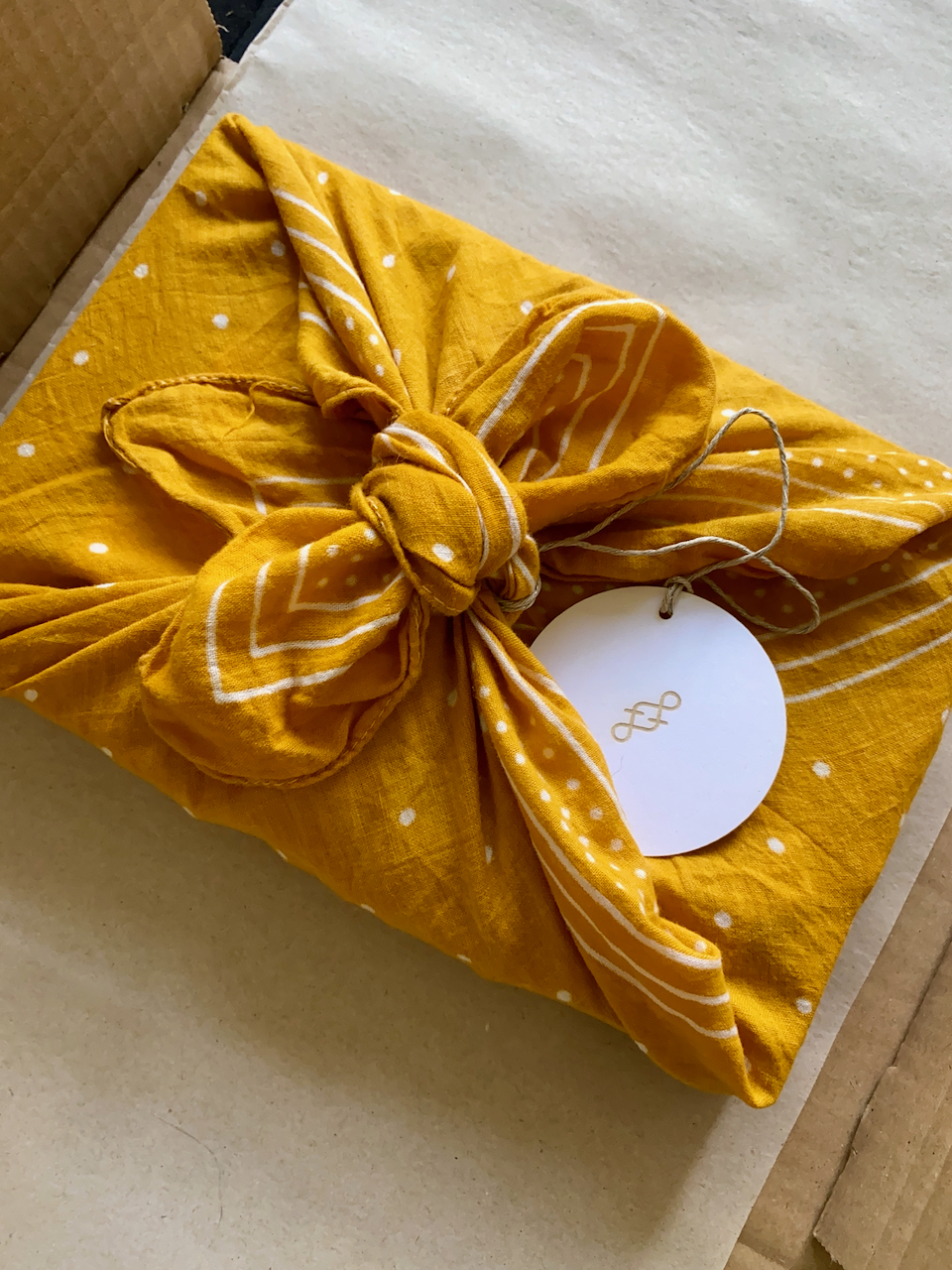
Wood
The wood I use for the covers is from a local supplier and has been optimized for laser processing. It’s comprised of a fibreboard core and real wood veneer on both sides, the wood comes from well-managed regional forests and the fibreboard has no formaldehyde or VOCs. You can choose between Maple, Cherry and Walnut.
I chose wood for the covers for a few reasons:
- It’s easily customizable — by default each book comes with a unique design engraved on the front cover and a fitting quote on the inside back cover — and there are further options to customize with your own cover design, small logo, or your own favourite quote.
- No two are alike — as well as the custom design on the front the grain pattern of the wood is always different, like a fingerprint, which makes each one even more special.
- It’s warm to the touch — there’s a natural comfort to this material that suits this purpose of celebrating people so well — it was alive, and we are like trees in many ways.
- Wood simply smells good, I’m a big fan of all woody scents, but you can’t beat the real thing, each memory book is a subtle treat for the senses.
- I save all the usable wood offcuts and create tags, earrings and mini-book decorations from them, as well as a whole line of cat puzzles
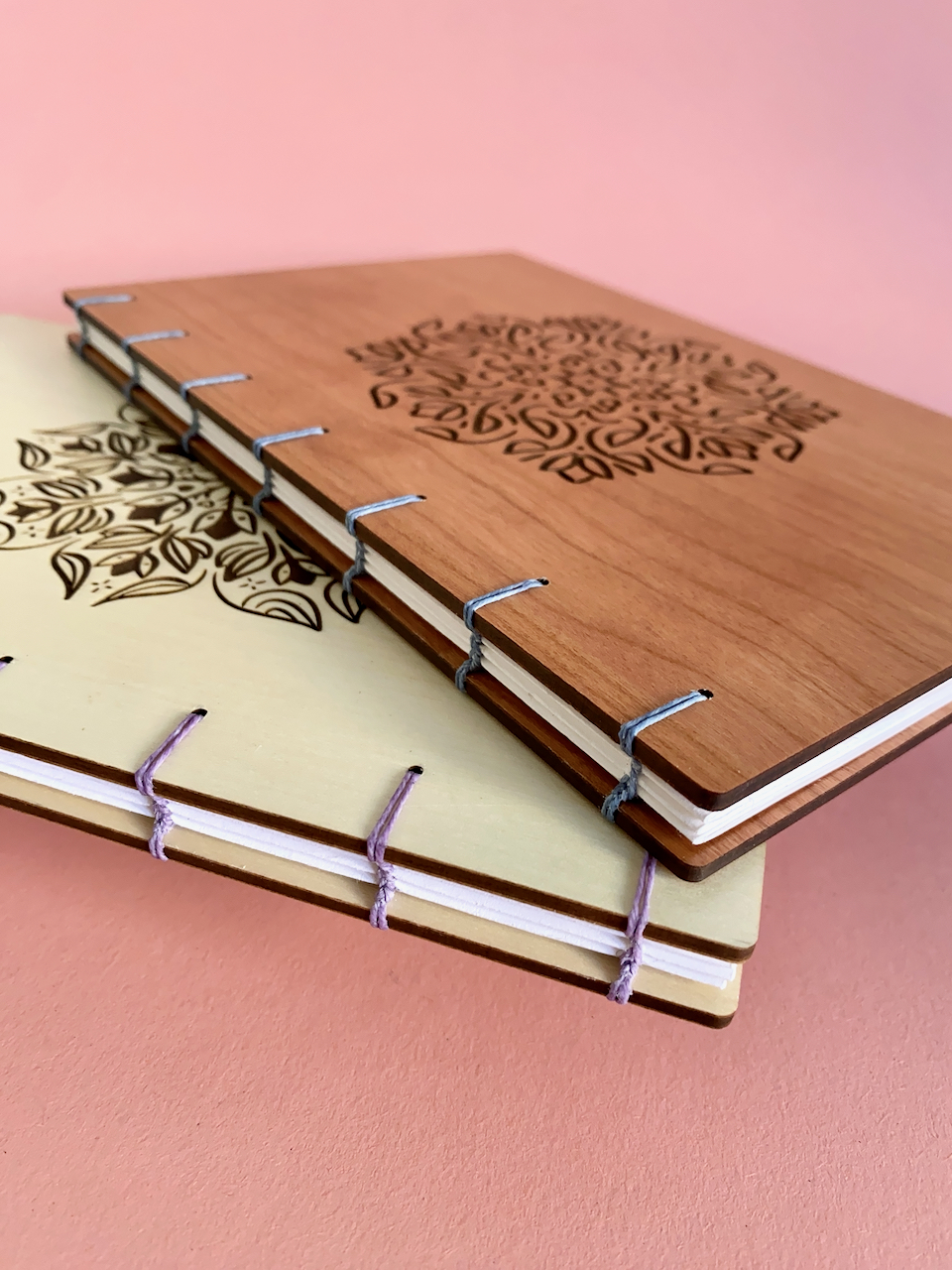
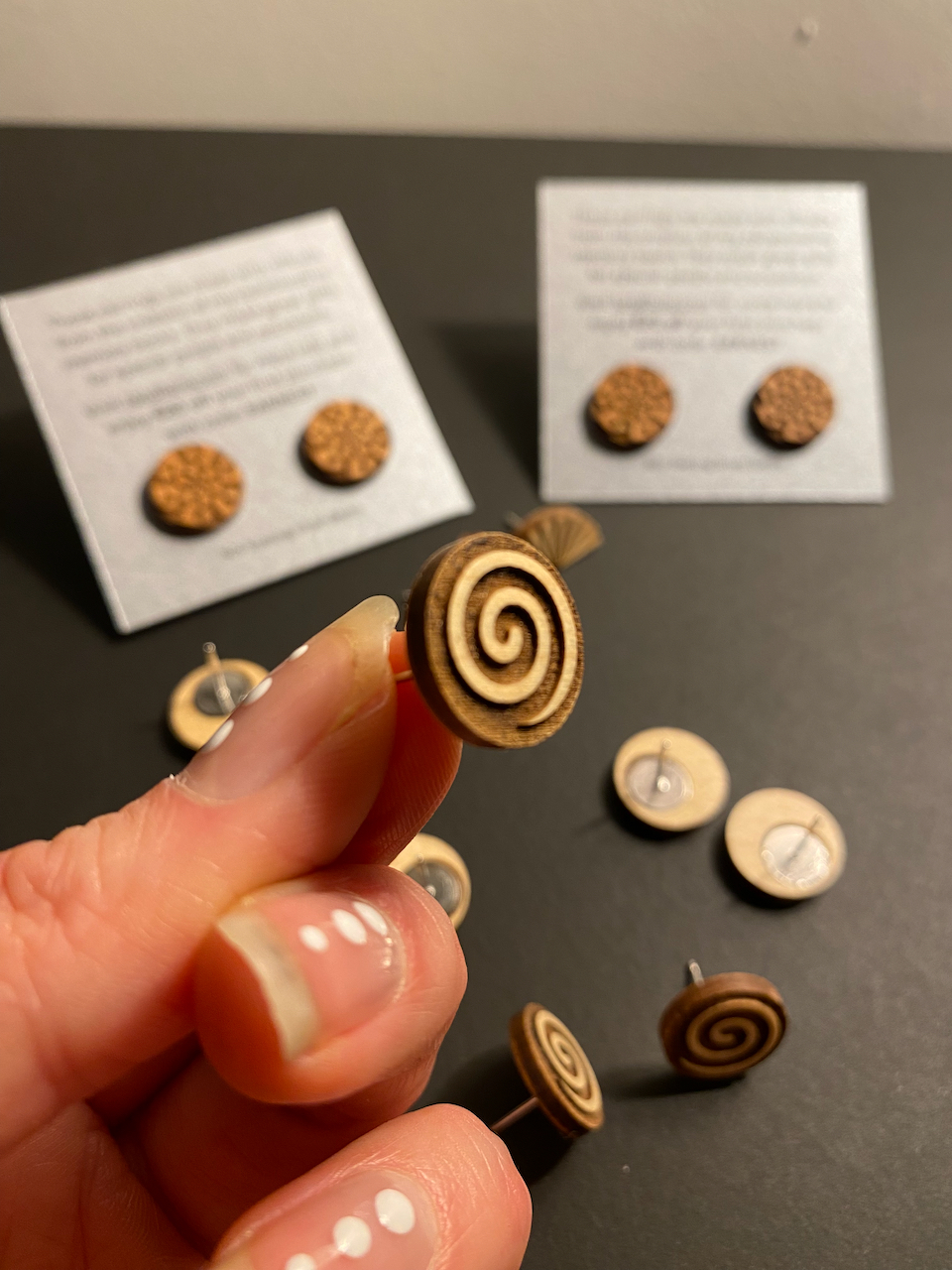
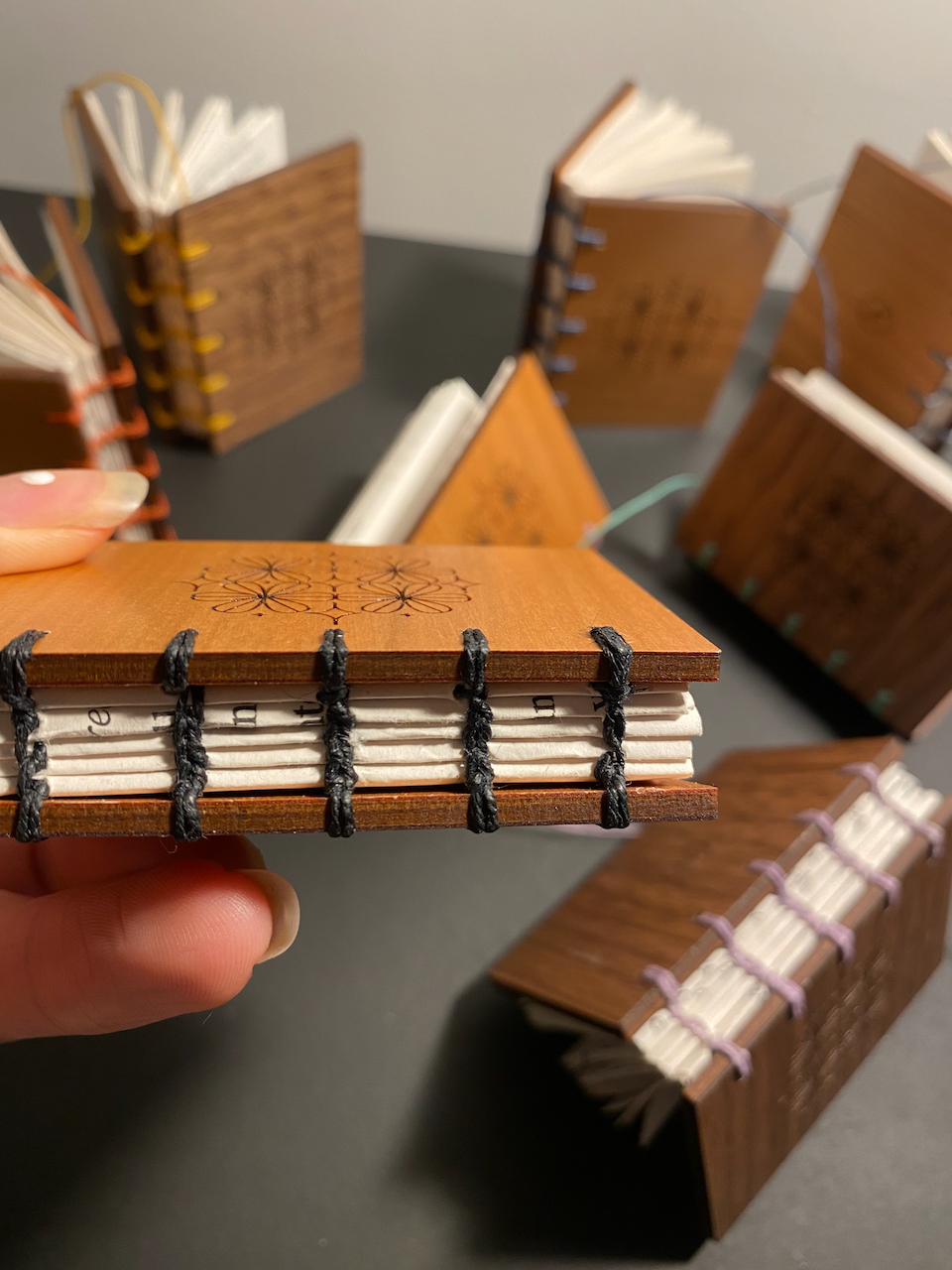
Paper
This paper is a 70lb text weight from French Paper Company. It’s made from 100% recycled materials, but has a premium look and feel. And it’s a paper with personality, with each sheet boasting a unique pattern of tiny flecks and shivs.
Inevitably there are some mis-prints, but I always save them to reuse as scrap paper later or in my mini-book decorations.
Thread
I use a 4-ply waxed Irish linen thread — a super tough natural material which comes in a variety of lovely colours.
I didn’t want to use glue which is why I chose to bind using the coptic method. This also allows the book to lay flat, making it easier to read.
Ink
I print each book with my High Resolution Epson inkjet printer which has a refillable tank, and each fill lasts forever. It’s black and white only, so I just have to buy the one colour.
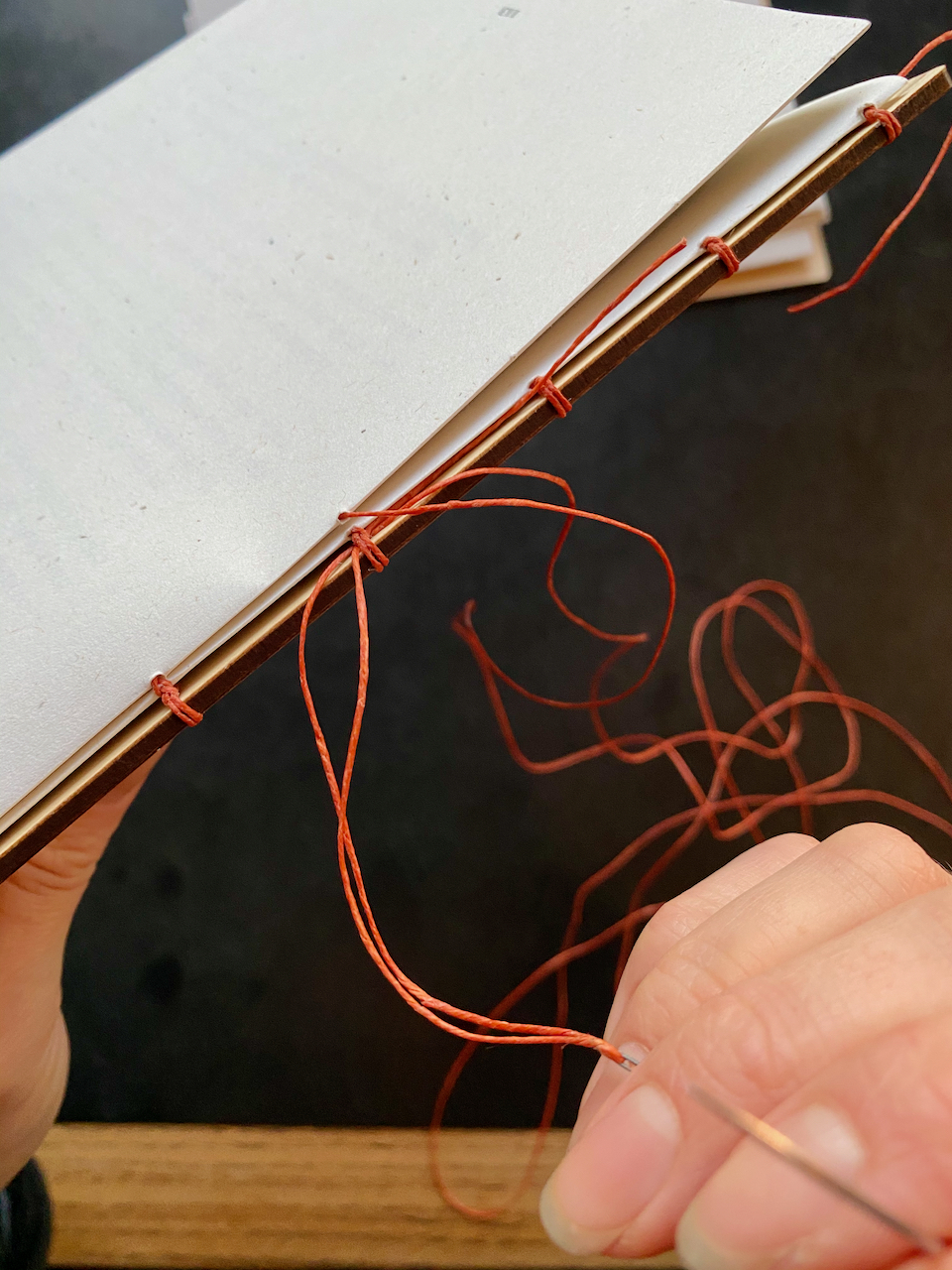
I carefully chose these materials to create memory books that balance environmental responsibility with durability and quality. Every component is made from natural materials and free from harmful chemicals (well, perhaps with the exception of the printer ink). This means that, if one of these books ever ended up in a compost heap, it would naturally break down and return to the earth.
That said, when treated with care, these books are designed to endure for generations, hopefully becoming cherished family keepsakes.
There’s always room from improvement, so if there’s anything you think I could do to increase the product quality or the sustainability of production, let me know!
written by fiona
Questions? We’re here to help.
Visit support or Give us feedback
We value your words.
Updates, gifting tips, and promos
— an occasional newsletter